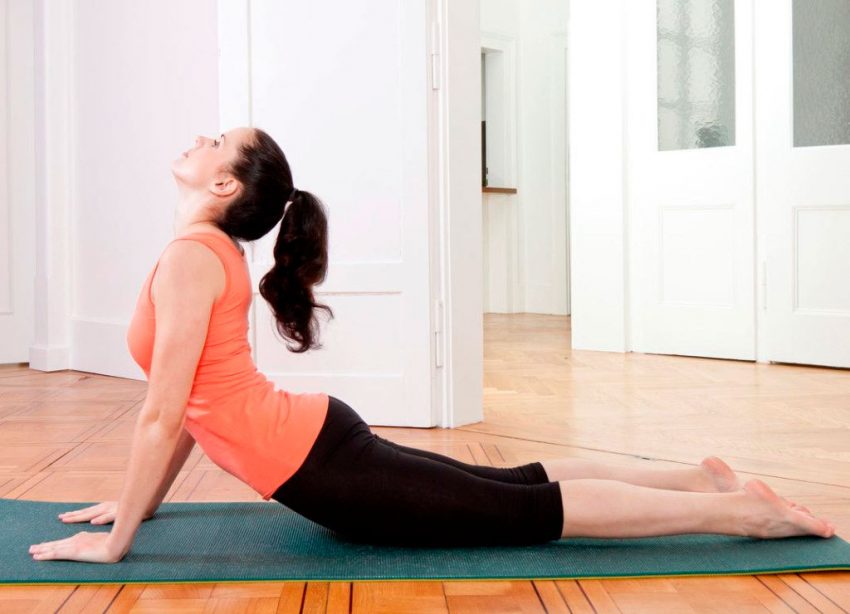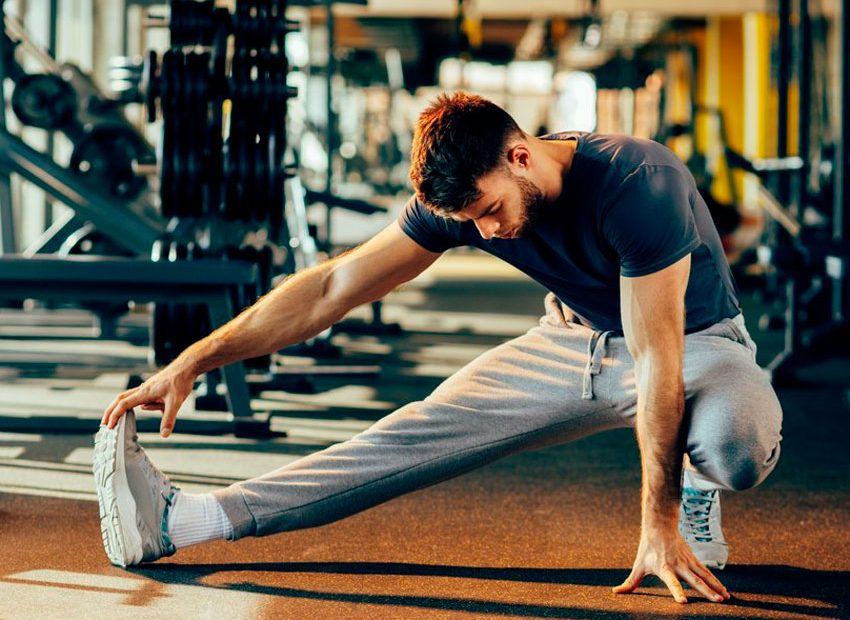The main purpose of stretching is to intentionally lengthen the tendons and muscle tissue. This is not the only purpose of this exercise. It helps to strengthen and grow muscles. Performing it regularly makes you more flexible, improves your well-being and helps you find the right posture. Stretching well after a workout reduces the likelihood of injury. Without performing this exercise, it is impossible to talk about the correct completion of a workout in the gym.
When and why to stretch the muscles?
Stretching exercises are performed after the completion of the main workout. This is due to the fact that after active physical muscles are fully warmed up and ready to stretch. You can do stretching as the final element of the warm-up, but it is of great benefit at the end of the lesson. This exercise cannot be ignored because it makes muscles more elastic and flexible, helps to increase the volume and strengthen muscle tissue.
Stretching has a multifaceted positive effect:
- Opens up more strength training opportunities. Strong and elastic muscles avoid injury and unnatural movement. Muscles stretch well, which minimizes the risk of injury.
- Improves health. The movements performed during stretching help to avoid injuries to the articular apparatus and are an excellent prevention of immobilization. The result is a much better feeling.
For those engaged in strength training, stretching is even more important. It stimulates the growth of muscle fibers and strength indicators.
How to stretch correctly?
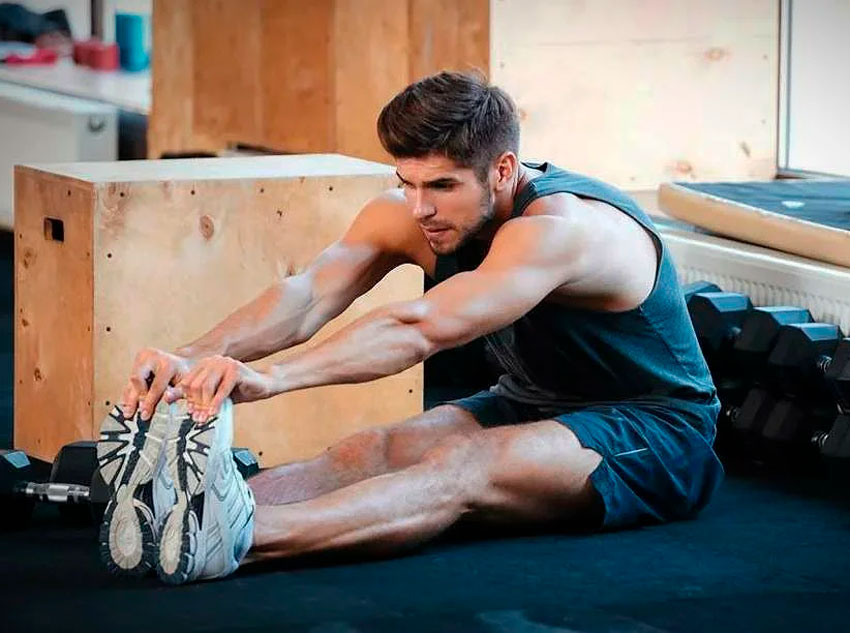
To maximize the benefits of stretching the tendons and muscles, it is not enough just to make the appropriate movements. The following rules must be followed and followed:
- Stretch at the end of your workout. At the beginning of the session, the muscles are not yet sufficiently warmed up. This makes a strong stretch almost impossible, as pain is felt in the muscles. At such a moment, it is necessary to stop, and not reach through force. The painful sensation signals that the stretch is being done correctly, but it’s time to stop in the accepted position. At the beginning of the workout, even after warm-up, this position will be much less effective, since muscle pain is felt earlier than in well-warmed ones.
- The delay time in the adopted position should be about half a minute. A smaller pause will no longer be quite effective.
- It is necessary to adhere to the principle of gradualness. No sudden movements. Stretch slowly and carefully. You can’t do everything to the maximum right away. The result is consolidated and improved from training to training.
- Sharp pain must not be allowed. It symbolizes the excessive tension of unprepared tendons and muscles, which can provoke injury. We’ll have to skip a couple of workouts. This will set back the progress achieved.
- Before performing a movement, be sure to relax the target muscles, and only then begin to stretch. When a muscle is in good shape, it resists and stretches well. Pulling with force can cause serious injury.
- Breathing is not critical. Breathe as it is most convenient for you. Above all, focus on the target muscle group.
- For maximum results. You should pull exactly the muscle group that was trained in the lesson, with the exception of the legs and lower back. It is recommended to stretch the latter regularly.
It is best to stretch in front of a mirror.
Stretching technique for muscle groups
Stretching technique is paramount. Each muscle group requires its own thorough approach. Correct stretching of a particular part of the body allows you to achieve the desired result in the shortest possible time.
Neck
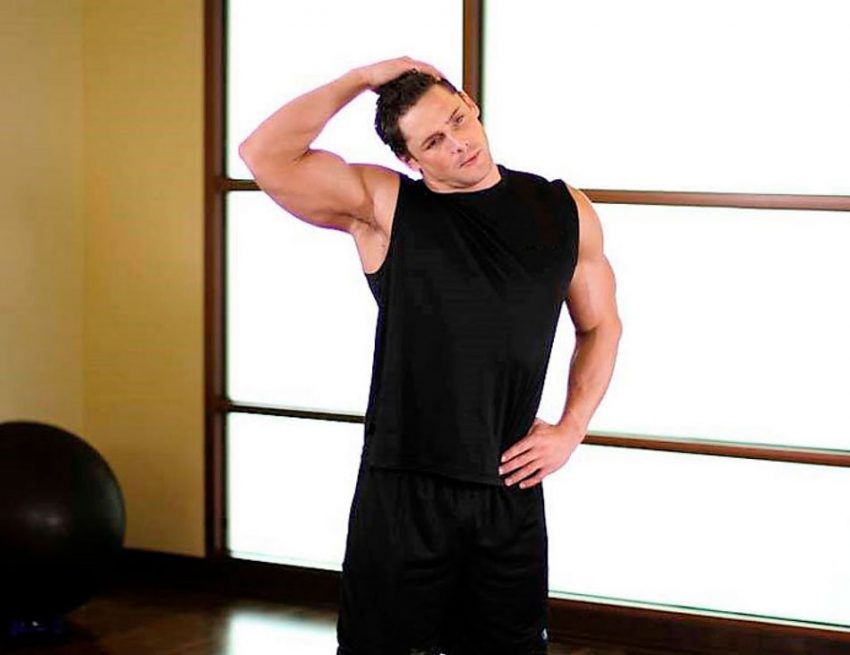
The basic exercise for stretching the muscles of the neck is tilting the head to the right-left, forward-backward.
- Take a starting position – just stand up straight. Look ahead of you. Slowly, without sudden movements, stretch your chin to the chest to the maximum, trying to lower your head as low as possible. This should hold for 10 to 15 seconds.
- Throw your head back, trying to reach the back of your back. Continue reaching for your back for 10-15 seconds. You cannot open your mouth. This will be cheating.
- Start stretching the side muscles of your neck. Take the starting position as before. Raise your right hand and pull your head to the right side. The main thing is not to allow shoulder displacement. When you feel tension, continue the movement a little more, linger in the accepted position for about 20-30 seconds.
- Repeat the movement from point 3, but on the opposite side of the neck, that is, pull your head towards your left shoulder with your left hand.
- Finally, make a few circular movements to the left and right.
Hands
To stretch the shoulder girdle, flexors, extensors, you must use either a wall bar or vertical support.
The shoulders and biceps are stretched as follows:
- Stand with your right side to the support. Keep your body and legs straight.
- Place the palm of your right hand on a stance. Do not bend your arm, but pull it back a little.
- Begin to rotate the body to the left, moving so that a stretch is felt in the right shoulder and bicep. Choose the optimal direction of movement yourself, based on your inner feelings.
- Stretch as much as you can, and then hold the final position for about half a minute.
Repeat the exercise on the other arm.
Triceps stretch is performed as follows:
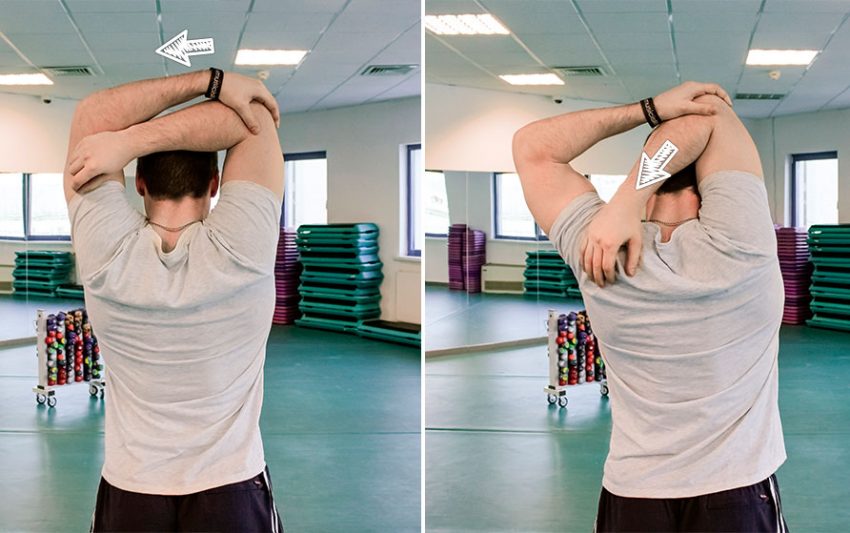
- Raise your right arm and bend your elbow so that your right palm is near your left shoulder.
- Grasp your right elbow with your left hand and pull it gently to the left.
- Hold at the extreme point of maximum tension for 30 seconds and change sides.
Chest
The pectoral muscles with the shoulder girdle and biceps are stretched as follows:
- Lean on uneven bars or other support, assuming a position like you want to push up. At the same time, the feet are on the floor. Elbows raised high.
- Slowly lower yourself down as far as your pectoral muscles allow. The body should not sink too low, as this position can damage the ligament. Always aim for the soreness to be mild, but not excessive.
- Remain in this position for half a minute. You can start at 15-20, then work up to 30 seconds.
Abdominal muscles
To make your abdominal muscles more elastic and taut, stretch as follows:
- Lie on your stomach. Hands are placed as if you want to do push-ups.
- Straighten up as if you were doing push-ups. The pelvis should be pressed against the floor surface. Bend as much as possible. Hold this position for about 30 seconds.
When you feel severe back pain, bend not to this position, but to the most comfortable position. Then gradually you will be doing more deflection, stretching even better.
Back, lower back and back of the thighs
To stretch your upper back, follow these steps:
- Stand straight with your chest forward and your pelvis back. Try to breathe as evenly as possible. Begin to bend your back in the chest area to the maximum. The shoulder girdle is brought down in front. Stretch your arms forward and down. Move your chin behind your hands.
- Stretch your arms as much as you can, and then return to the starting position. There is no need to pause. Tension should be felt around the shoulder blades. When it is absent, try to move so that the stretch falls on these muscles.
